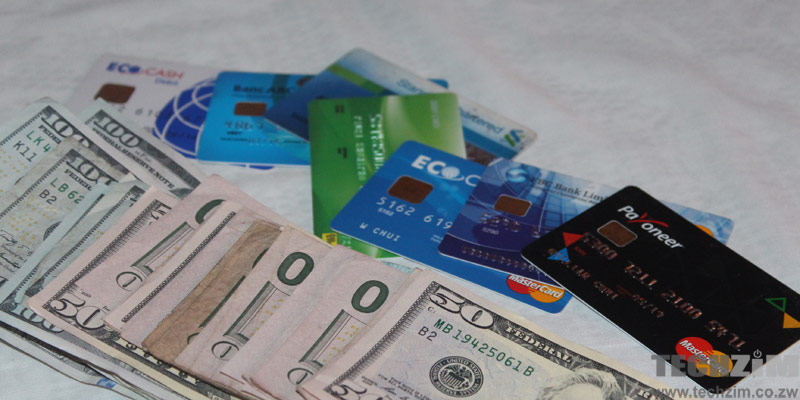Just a few weeks ago we were astonished when we learned that the Reserve Bank of Zimbabwe (RBZ) had recorded $11 billion worth of transactions in 9 months i.e January to September 2017. Well, it only gets better.
According to The Source, in the last week of October 2017, Zimbabwe transacted a total of $2 billion via electronic payments. That’s like 18.18% of the amount transacted in 9 months all in just a week!
This can be interpreted as both good and bad. Good in that this figure indicates the high adoption of plastic money in Zimbabwe and bad in that it could be an indication that the cash crisis is actually worse than we thought.
Zimbabwe has/was never really big on plastic money, even when we became trillionaires at some point along the way in 2009, we maintained print. We ‘preferred’ carrying our large bags and suitcases of money or better yet, just ‘preferred’ making one note to represent all the trillions to making use of digital money. However this time around, we didn’t just go all bollars (a term used to describe or rather mock bond notes) but were a bit smart about it by making use of digital currency so it doesn’t look as bad… I mean anyone can interpret taking a suitcase full of money to the shop just so you can use it to buy a loaf of bread as bad, but not so much when the money becomes virtual.
Nonetheless, let’s try to keep positive.
So on the plus side as I had mentioned earlier on, the $2 billion worth of transaction figure indicates the high adoption of plastic money, which is in line with what the government proposed. I’m sure you know what they say about adapting or dying right? If so, then you understand why adapting even in this particular case is such a good thing.
Also, other interesting things to note are that on the previous week (the one before the $2 billion dollar worth of transaction strike), the total amount of money transacted electronically in Zimbabwe according to the National Payment System (NPS) was also not too far from that figure, it was sitting at $1.7 billion.
The figures are also suggesting that this rise in the value of electronic money transactions was mainly contributed by Real Time Gross Settlements (RTGS) transfers. RTGS made up 71% of the value of transactions processed through the NPS while the remaining percentage was shared between mobile-based transactions, Point of Sale (POS), cheque and Automated Teller Machine (ATM) transactions.
However, in terms of transaction volumes (not amount), mobile based transactions took up a greater percentage i.e. 75% while POS took up 23,9% leaving RTGS, ATMs and Cheque at 0.55%, 0,41% and 0.02% respectively. This is not a shocker as it is expected for mobile based transactions to take up that much volume of transactions since people often used mobile money services such as EcoCash to make micro payments.

2 comments
Remember that some of this money is black-market forex trading which probably chips in high values as the money makes it’s way back to the kingpins. That money is not symbolic of trade, it is just part of the laundering chain. Remember that with political uncertainity those that are planning on leaving need hard currency.
And, where is the ZIPIT contribution? ZIPIT != RTGS.